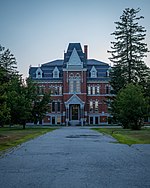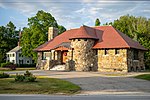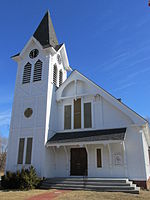Little River (Brentwood, New Hampshire)
New Hampshire river stubsRivers of New HampshireRivers of Rockingham County, New Hampshire
The Little River is a 7.3-mile-long (11.7 km) stream in the towns of Kingston and Brentwood in Rockingham County, New Hampshire, United States. It is a tributary of the Exeter River, part of the Great Bay/Piscataqua River watershed in the New Hampshire Seacoast region. The river should not be confused with the Little River of Exeter, another tributary of the Exeter River less than 3 miles (5 km) away. The Little River rises in the northwestern part of Kingston and follows a winding course generally northeast through flat or slightly hilly terrain. The river turns north as it enters Brentwood and reaches the Exeter River east of Brentwood's town center.
Excerpt from the Wikipedia article Little River (Brentwood, New Hampshire) (License: CC BY-SA 3.0, Authors).Little River (Brentwood, New Hampshire)
Wendell Drive,
Geographical coordinates (GPS) Address Nearby Places Show on map
Geographical coordinates (GPS)
| Latitude | Longitude |
|---|---|
| N 42.975 ° | E -71.034166666667 ° |
Address
Wendell Drive
Wendell Drive
03833
New Hampshire, United States
Open on Google Maps









